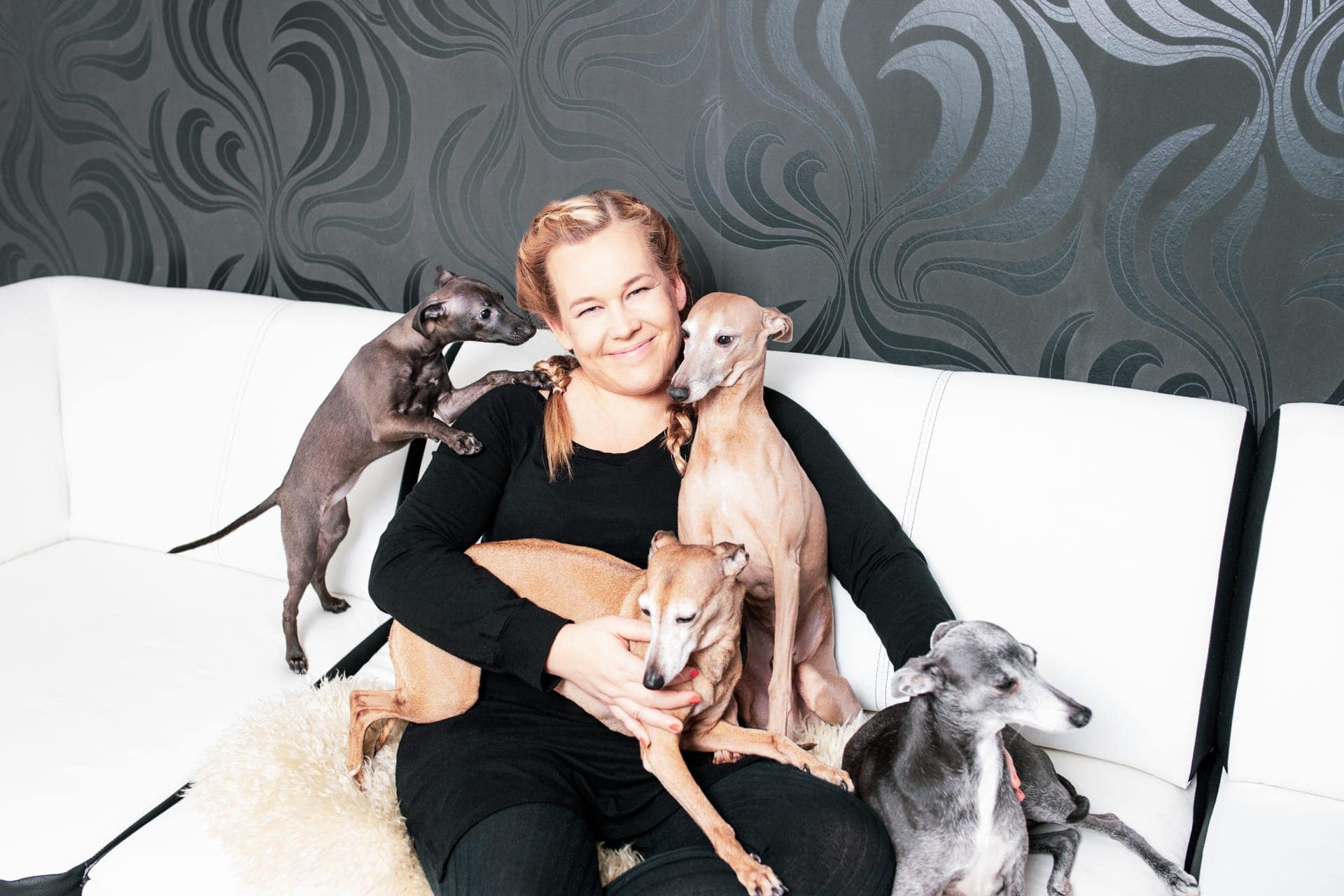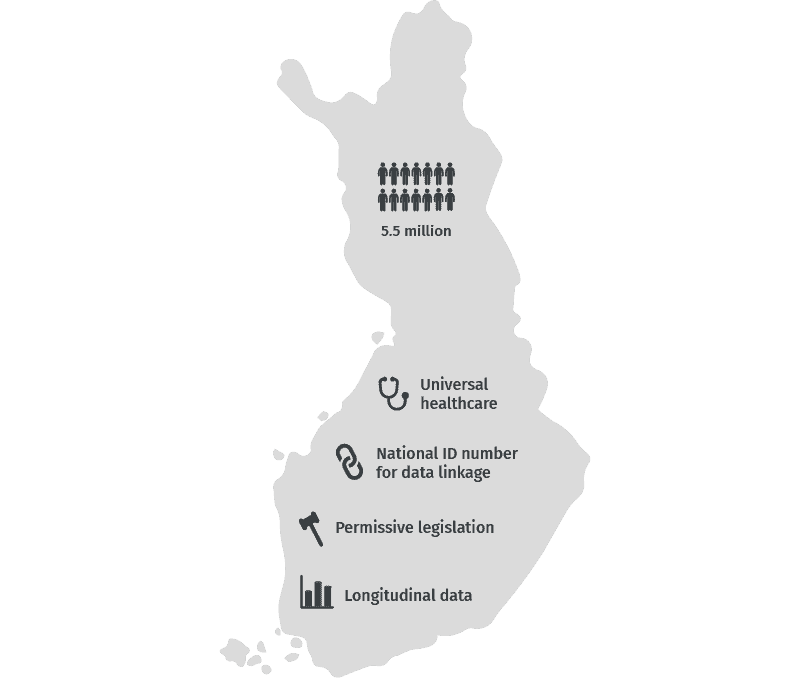What makes Finland’s real world data special? Four ingredients for success.
The Finnish health and social care registries are unique from an international perspective. Thus, real-world data (RWD) recorded in the Finnish registries is a strong option when weighing in which country the research would be carried out in. Why are Finnish registries interesting?

My previous blog discussed the history of RWE research. There we estimated the number of RWE-studies to be published this year at around 1,500. By August, the PubMed database contained 775 published RWE studies (searched on August 9th, 2021, under the search terms “real world evidence”). There are still many months left this year, so we’ll be looking forward to the actual number of published RWE-studies in 2021!
RWE study is 17 years old. The conclusion was made in my previous blog and was based on the first published RWE-themed research article. RWE-research has its roots deep in the traditional registry-based study, which is much older than RWE-study. Especially in Finland, registry study has a long history because the first comprehensive patient registries were established 70 years ago.
“Finnish registries have unique features that are missing from other countries”
Finnish real-world data (RWD) is of interest also outside our country’s borders. The social and healthcare data describes Finnish patient populations. However, real-world evidence (RWE) derived from the Finnish RWD can also be utilized in other countries.
Next, I will present the four strengths of the Finnish social and healthcare registries that make them a compelling platform for RWE studies.
4 strengths of the Finnish social and healthcare registries:
1. Personal identity code identifies and combines
In the early 1960s, mathematician Erkki Pale developed a personal identity code for the Finnish salary-related pension system. The personal identity code was used to link the person’s different employment relationships and distinguish between persons with the same name. Since then, all individuals registered in the Finnish Population Information System have received a personal identity code.
The ultimate purpose of a personal identity code is to identify people, because individuals with the same name or those born on the same day exist. Still, persons with the same personal identity code cannot exist. In addition to identification, the personal identity code is used for communication between the registries and information systems. The personal identity code is always presented when using the social and healthcare services in Finland. It is not possible to utilize these services as an anonym person. As a result, each contact is stored in the registers in the data of the person concerned.
The personal identity code is essential in the RWE-studies, as the data extracted from the various registers can be combined with the correct person using a personal identity code. In this way, the information contained in the different registers can be linked into large entities. After the data extraction for an RWE-study is ready for all included registries, the personal identity code is replaced with a randomized ID -number created for the study purposes. In this way, patients can no longer be identified.
2. Universal healthcare
Despite the relatively small population in Finland, the Finnish social and healthcare data sources are competitive with the registries of larger countries. For that, we can thank the Finnish universal healthcare.
“The Finnish registries cover all individuals living in Finland.”
All permanent residents in Finland, regardless of their financial situation, are entitled to public healthcare. For this reason, the information contained in the Finnish social and healthcare registers is not skewed in terms of any selection criterion.
Finnish university hospital data lakes contain detailed information on their patients. From data lakes it is possible to obtain for example laboratory- and medical imaging data for research purposes. Further, the Social Insurance Institution of Finland (Kela) is a government agency that provides basic economic security for everyone living in Finland. Kela’s registries include information on all reimbursements paid by Kela, such as drug purchase reimbursements. Data on periods of illness and pensions are also available for research purposes. In addition to public healthcare, there are private healthcare providers in Finland. As an example, private healthcare provides occupational health care services, which are mandatory in Finland. Register data on private healthcare service patients are also available for research.
3. Longitudinal data
Patient data has been stored in digital form in Finland for a long time. Longitudinal data enables extended retrospective follow-up of the patients, which allows us to, for example, to follow the patients socioeconomic status or survival for ten years after getting an illness. Most Finnish social and healthcare registers contain data from 2000 onwards, while others are much older. The Cancer Registry was established already in 1953, while Kela drug purchase reimbursement data is available from 1995 onwards, and THL primary health care data from 2011 onwards.
4. Permissive legislation
The Act on the Secondary Use of Social and Health Data, i.e. the Secondary Act, entered into force in Finland in 2019. The Secondary Act was introduced to create uniform conditions for the secure use of social welfare and healthcare data or other related personal data. Social and Health Data Permit Authority Findata was established soon after the introduction of the Secondary Act. Findata is responsible for permit processes, data aggregation, and secure use of RWD.

Conclusions
Every RWE study is initiated with a specific application in mind. The primary purpose is usually to develop better treatment for patients. RWD can be utilized for many purposes, as you can see in my previous blog post.
The value of the Finnish health and social care registries and the possibilities offered by the legislation have been recognized. Therefore, the social and health data permit authority Findata has encountered a great number of data permit applications during its first year of operation.
In order to utilize this unique data pool to its full potential, it is important to start the RWE research well in advance of the moment the data is to be used.
Read more about how the Finnish ecosystem supports RWE studies!

